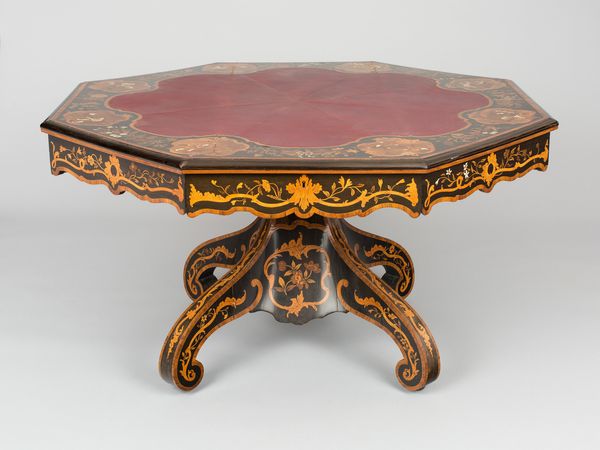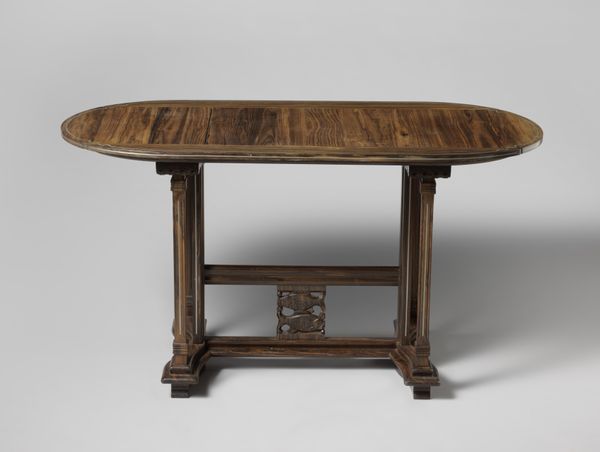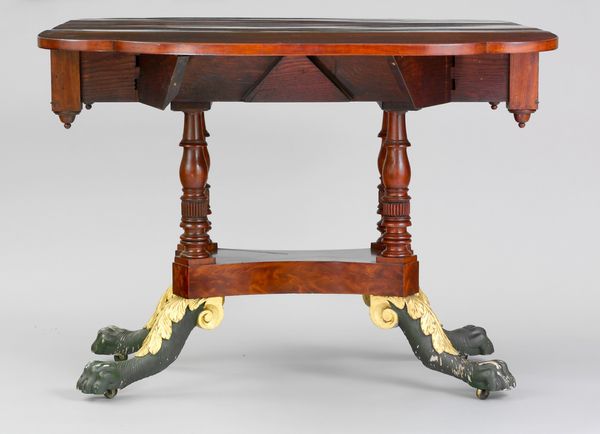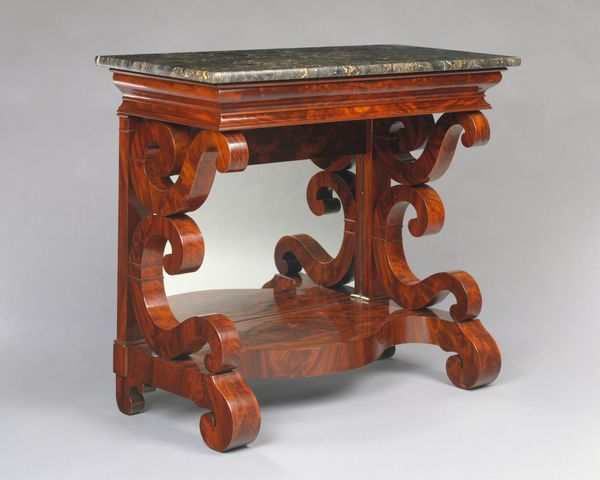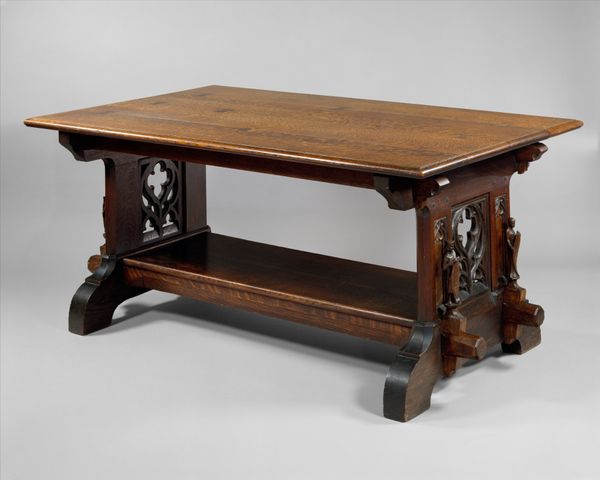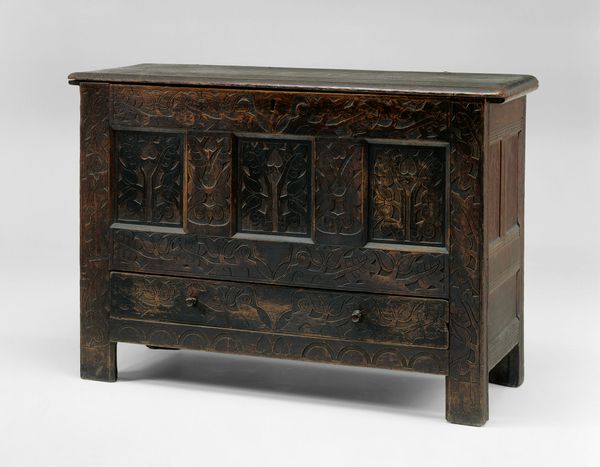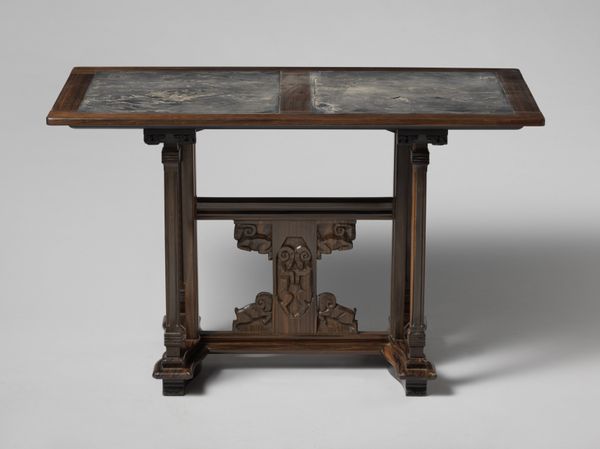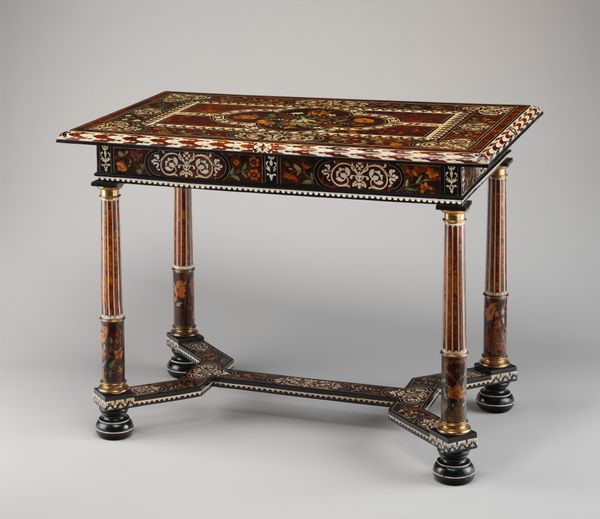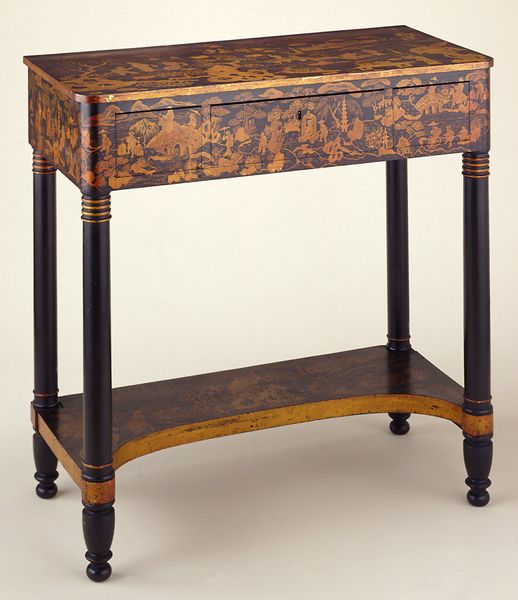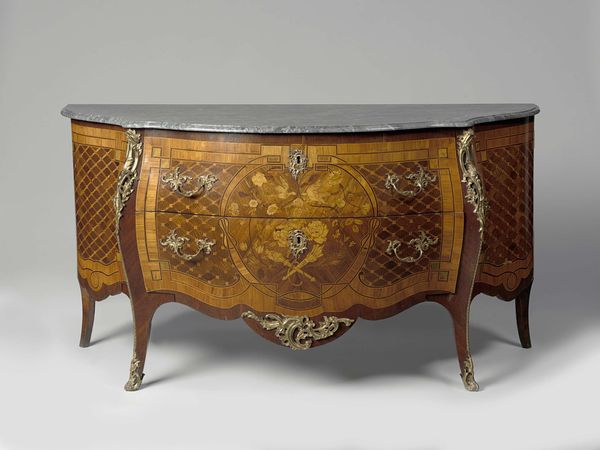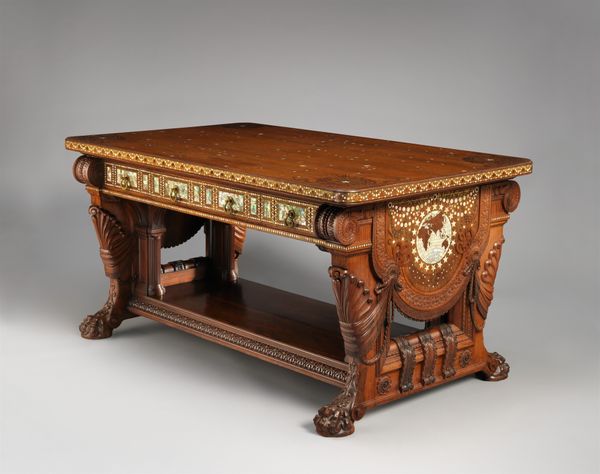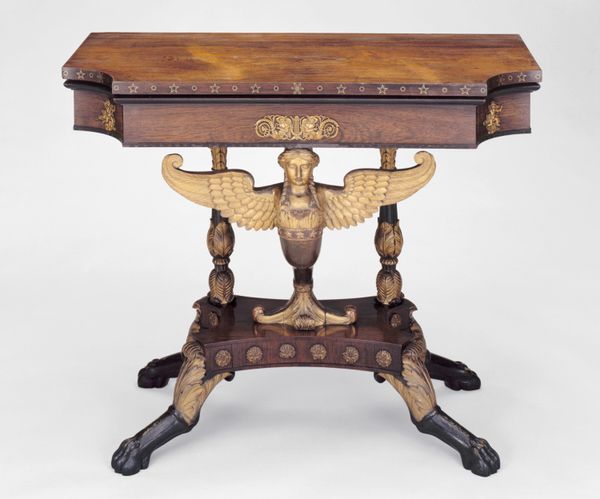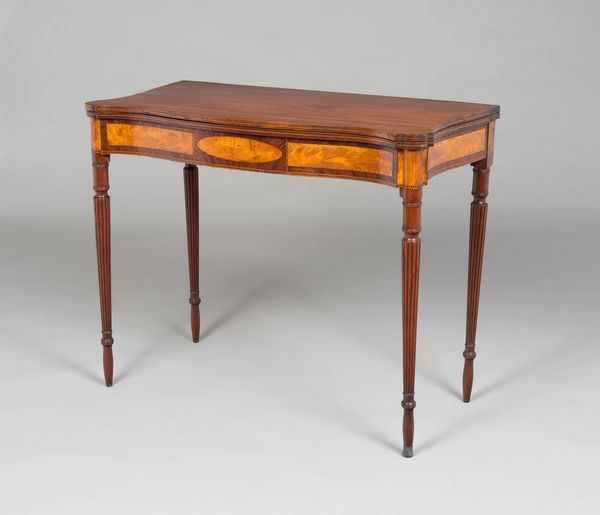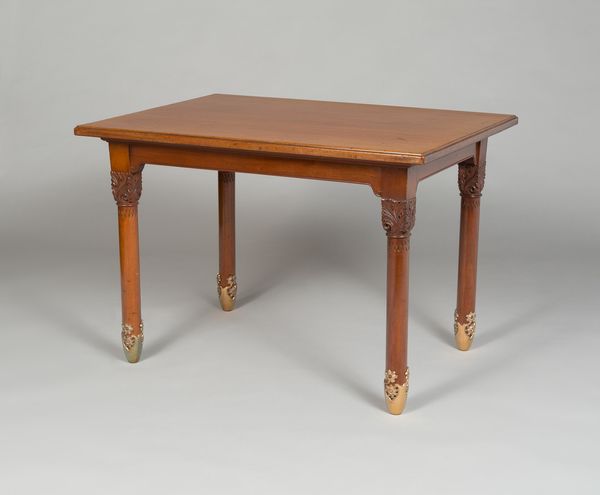
#
natural stone pattern
#
wood texture
#
pottery
#
animal print
#
stoneware
#
warm palette
#
wooden texture
#
earthenware
#
natural palette
#
watercolor
Dimensions: height 76.0 cm, width 98.5 cm, depth 71.5 cm, width 90.0 cm, depth 58.0 cm
Copyright: Rijks Museum: Open Domain
Curator: This ornate table, created by Jan van Mekeren around 1695 to 1710, offers an intriguing look into the stylistic tastes of the late 17th and early 18th centuries. Editor: It’s rather somber, isn't it? The dark wood dominates, yet there's an attempt to alleviate the austerity through the floral inlays. I find myself drawn to its quiet formality. Curator: Indeed. Notice how the artisan uses the wood's inherent grain and color as key elements of the overall design. The dark panels are juxtaposed against lighter edges and floral detailing, creating contrast and rhythm. Editor: The floral imagery seems directly tied to themes of growth, prosperity, and the bounty of nature that were frequently used in Dutch art. The inclusion of the flowers almost feels talismanic, evoking ideas of health and well-being for the home it occupied. Curator: Exactly, the arrangement and style of the inlays indicate an emphasis on craftsmanship. Look closely and you will see the level of precision and care, indicating considerable skill. The design suggests both formality and a conscious organization of surface planes. Editor: Considering the period, the darkness and the density of the applied floral motif may speak to cultural anxieties, or the ephemeral nature of life's joys in a world shadowed by uncertainty and plague. Curator: An interesting perspective. Whether that darkness reflects anxieties, the careful balance of light and shadow is a clever aspect of this piece's visual construction. Editor: By recognizing how Van Mekeren incorporated symbolic weight and detail into a functional object, we can glimpse aspects of their belief system and broader culture. Curator: Ultimately, examining elements such as its careful structure enables a much better understanding of this artist and this historical moment. Editor: Agreed. This dialogue reminds us how household objects can tell us such rich histories if we stop and consider how it speaks, not only materially but symbolically.
Comments
rijksmuseum about 2 years ago
⋮
This table was meant to be placed against a wall. Such tables usually had a mirror hung above them and candlestands on both sides. Often there was also a matching cabinet with similar floral marquetry decoration. All the furniture in a room would thus create a decorative unity.
Join the conversation
Join millions of artists and users on Artera today and experience the ultimate creative platform.
